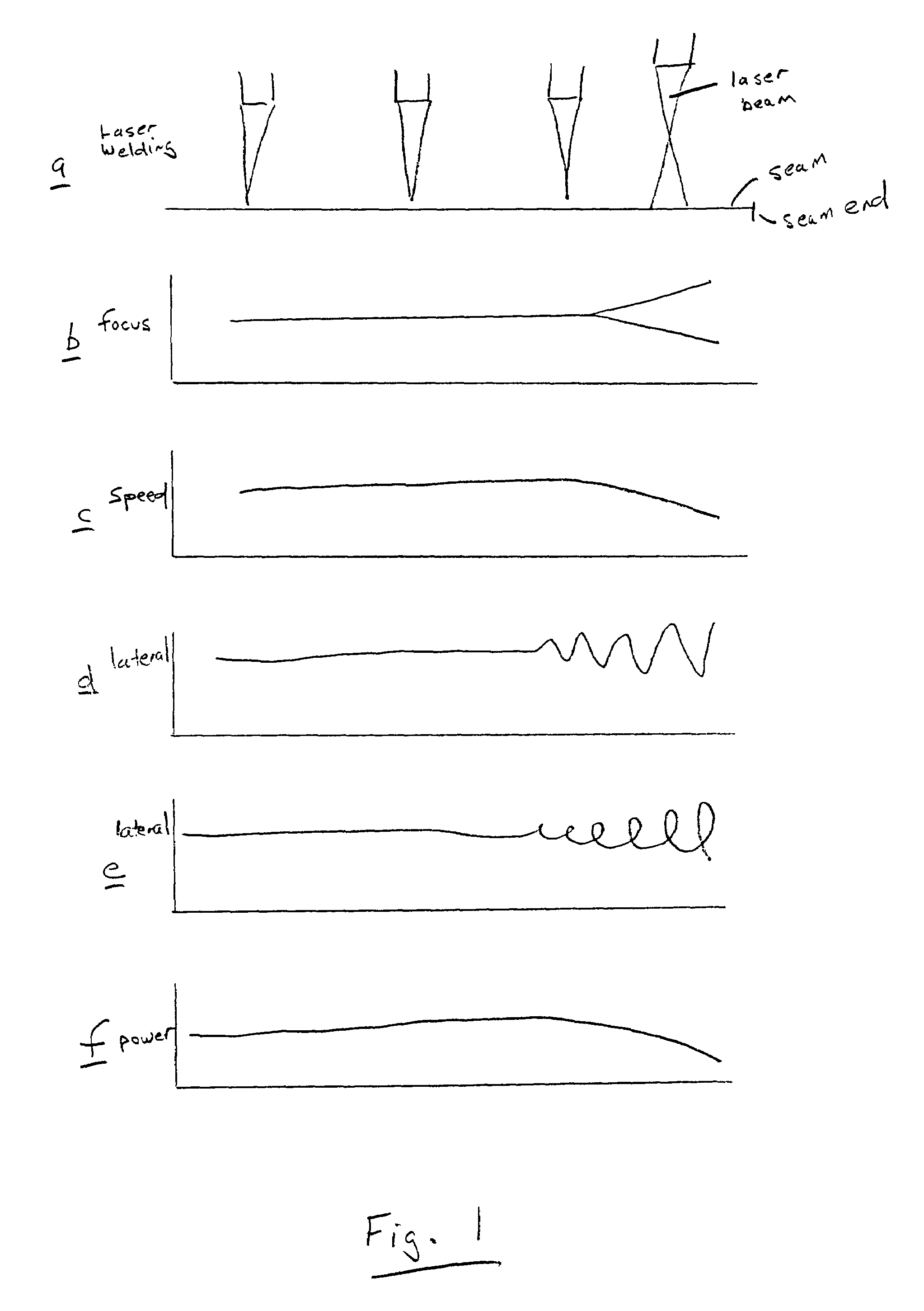Process for laser beam welding with reduced formation of end craters
- Summary
- Abstract
- Description
- Claims
- Application Information
AI Technical Summary
Benefits of technology
Problems solved by technology
Method used
Image
Examples
Embodiment Construction
[0034]In the following the inventive process will be described in greater detail on the basis of illustrative embodiments:
[0035]In a first illustrative embodiment steel sheet metal is arranged, and a scanner device is moved evenly thereover deflecting a laser beam over the surface being processed. The scanner device is comprised of a three-dimensional pivotable computer controlled mirror system. The scanner device has approximately 300 mm separation from the surface of the sheet metal, the laser focal point is located on the surface to be welded. Approximately 3 mm before reaching the programmed seam end the focus of the laser beam is distanced from the surface being processed in such a manner that the surface area illuminated by the laser beam increases linearly and incorporates at the seam end a processing surface area equal to approximately another 100% of the focus area. In synchrony with the removal of the focus from the surface, the weld speed is reduced in such a manner that ...
PUM
| Property | Measurement | Unit |
|---|---|---|
| Length | aaaaa | aaaaa |
| Time | aaaaa | aaaaa |
| Power | aaaaa | aaaaa |
Abstract
Description
Claims
Application Information
 Login to View More
Login to View More - R&D
- Intellectual Property
- Life Sciences
- Materials
- Tech Scout
- Unparalleled Data Quality
- Higher Quality Content
- 60% Fewer Hallucinations
Browse by: Latest US Patents, China's latest patents, Technical Efficacy Thesaurus, Application Domain, Technology Topic, Popular Technical Reports.
© 2025 PatSnap. All rights reserved.Legal|Privacy policy|Modern Slavery Act Transparency Statement|Sitemap|About US| Contact US: help@patsnap.com


